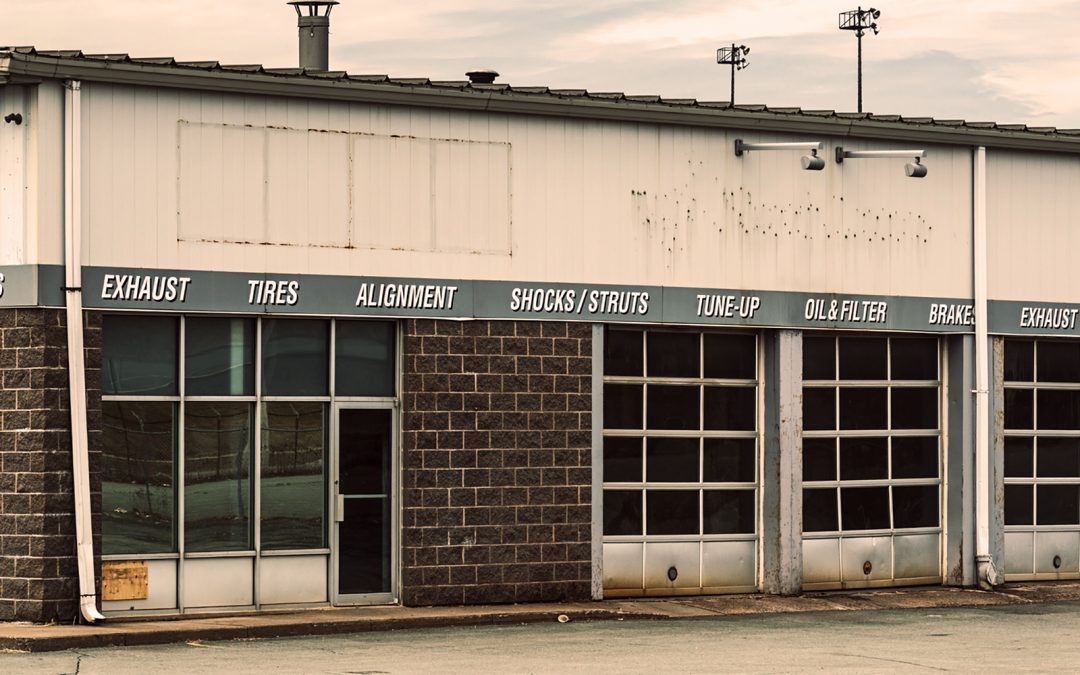I recently received a newsletter that stated that there were 8,000 fewer car and light truck service bays in 2016 than at the same time in 2011. What does that mean for the repair industry, technician, and possible future shop owners? I was also curious how these statistics transferred to the consumer.
The DIFM Shop
According to the Lang Report 2018, the Do-It-For-Me (DIFM) group experienced an 11 billion dollar increase in product sales over those five years when the number of bays had reduced by 8,000. That simply means that the bays that are still operating are turning more dollars per hour than they did back in 2011. What could lead to this increase? The price of the components has certainly not decreased, which would signal some of the increase. Is it possible that the bay is being managed more efficiently, which in and of itself has increased revenue? The same Lang report showed that in 2016 each service bay averaged $73,000 in sales, which is up from $63,000 in 2011. That’s just product/component sales, not including labor. The same report said labor charges increased over the same period at nearly 4.0%. Americans purchased 17.55 million vehicles in 2016 which was again an increase over the prior year. In fact, new vehicle purchases have improved for the last seven years. Yes, these 17.55 million vehicles are under warranty currently, and they are being serviced by the OE, but in three years or less, that warranty will have expired. The owners will then have to rely on an independent repair facility to mend their vehicles. With the average vehicle age currently in the 12 to 13-year range, there are a lot of vehicles out of warranty and relying on the independent service shops for repair. We also need to factor in the technology required to repair today’s modern vehicles. This alone will funnel more vehicles into the professional service bays.
Post-secondary Training
So does this mean there is less work for the technician? In an article written by Tim Moran in the Fixed Ops journal, Moran quoted Mark Davis of Seminole State College of Florida. According to Davis, Ford and General Motors estimate a need of 15,000 for their dealerships over the next five years. Davis also estimated there would be a 25,000 shortfall of technicians in North America over the same time-period. In a recent article published in the New York Times, it discussed how Fiat Chrysler was addressing this issue with their Mopar Career Automotive Program (CAP) program. The article stated that there were 80 of these programs across the nation contained within community college programs. It was estimated there were about 4,000 students enrolled in the CAP training. Having worked with several community college automotive programs across the nation I have been introduced to these types of programs from many different OE manufacturers, such as Ford’s ASSET, Toyota’s T-Ten, General Motors ASEP, and Honda’s PACT program. These all provide great opportunities for young technicians to build a solid education on repairing that specific brand. I am sure it provides some basics that will transfer to any manufacturer’s system. I also believe these types of programs will help dealerships reduce the impact they will feel from the qualified technician shortage that is affecting the industry.
The Independent Shop
If you are a young person that is currently looking at automotive repair as a career choice and you can attend a post-secondary automotive program, are you going to choose a program that provides a seemingly direct line to a dealership bay or one that educates you on multiple different systems with no direct line to employment? I fear the OE programs where available will garner the most interest and rightfully so especially if you’re the type of personality that is looking to work for one automotive brand. But if you’re an independent repair facility, where are you recruiting your future talent? Look at your current technicians. On average, the larger percentage of you have an aging group of technicians, which should make you look at the future with more interest, especially if you have another twenty or so years of operating the business. Obviously, you don’t have the capital to create your own training program through the local community college. You don’t have to fund your own program, what you do have to do is be present. What I mean by that, is be present at local high school career fairs and ask to visit with career counselors. Work with the automotive program chair at your local post-secondary facility. You can offer to be on the advisory board and possibly speak to the students on what a shop owner expects from a technician. I can assure you that if you interject yourself into these programs, you will gain access to top-level students to help fill your bays.
You Do What?
I was recently in a local area promoting a technician training class that focused on using a digital storage oscilloscope (DSO) to speed the diagnosis of today’s fuel system. I entered a very established shop to be greeted by the shop owner’s thirty-something year old daughter. I explained my reason for visiting and that Technician.Academy was offering this training in her area. She looked at the flyer that I had handed her and stated that they didn’t have a lab scope and didn’t think they need one. She also said that when they hire younger technicians, they teach them the old ways of diagnosing a vehicle. I must admit I was slightly caught off guard by her response, and I am sure I had the deer in the headlight look. I understand that her dad had operated that business for many years and had reached a plateau of success. As I left this very well-established and respected facility, I could not help but ask myself if they will still be in business in ten years with that type of mentality. My answer was a quick no; they will become one of the statistics. Later in the day after visiting several other shops that were interested in the training, I thought back to that shop again and hoped that the daughter had an exit strategy. Sadly, it may only be selling the location after her dad passes, thus allowing another established repair shop to disappear and only make room for a larger, more modern facility.
Things Look Bright
In another research study, it was found that repair shops were closing at a rate of 1,000 a year between 2010 and 2015. If you have made it through the last ten years as an independent repair shop, things do look bright. I am not saying you can continue in the same way you have in the past and expect the same positive results. The repair industry is changing, and you must be willing to change with it. I started turning wrenches for a paycheck in 1986 and what if I had never tried to increase my abilities or knowledge? I might be in demand if someone needed a carburetor set or a Ford EECIII & IV diagnosed, but how much demand would that create really? I would probably need to find another occupation to support my family. I truly believe we are at a point in the industry that will create some of the greatest opportunities ever for growth of independent repair facilities. Of course, they must be willing to expand their education and search for quality employees. I plan on discussing how this affects the vehicle owners of the future in next month’s newsletter.
As always, I look forward to your opinions and feedback. You can contact me at [email protected] or call 812-618-6101.

